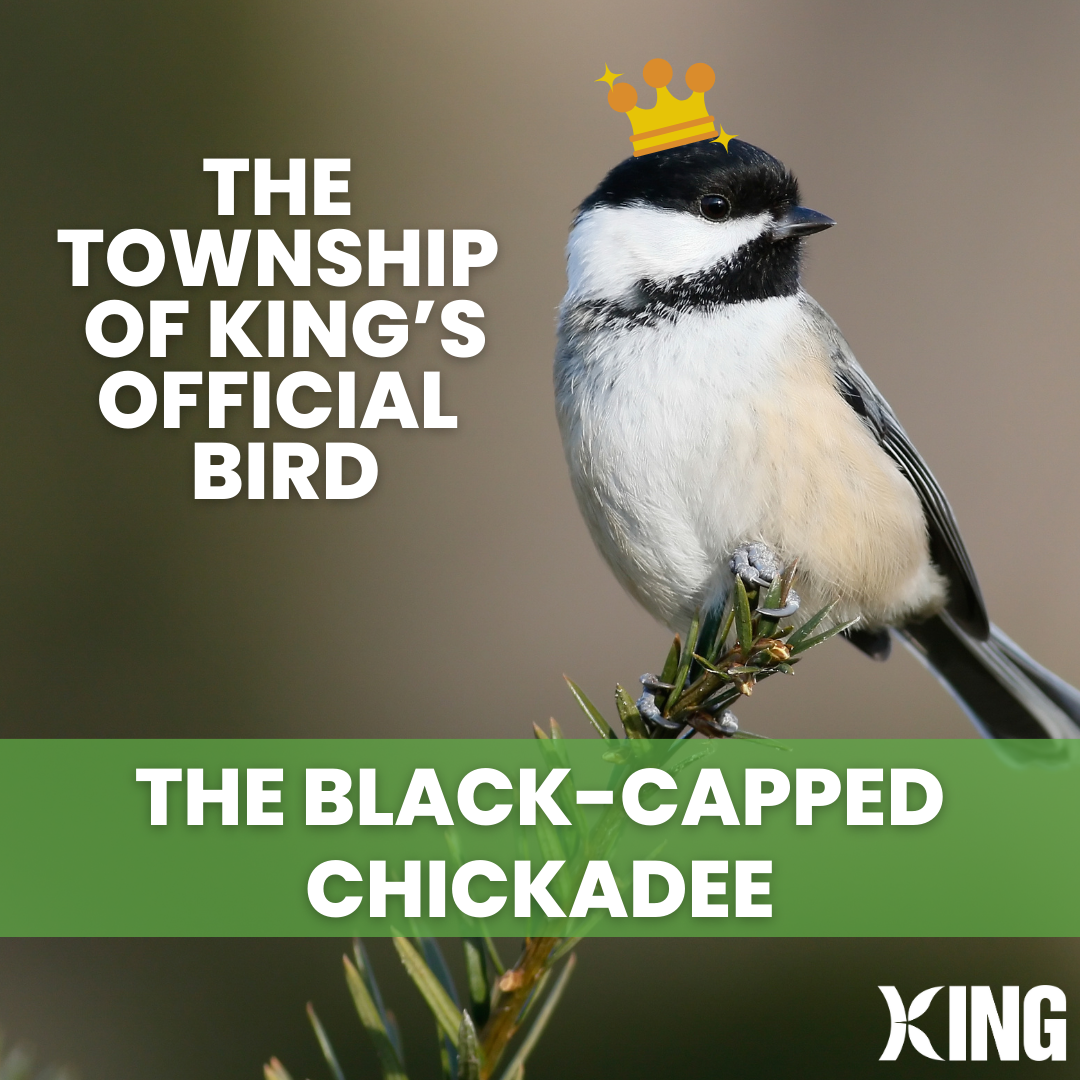Meet King Township's Official Bird!
After 5 months of voting, the King Bird Team and the Township of King are proud to announce that the Black-Capped Chickadee is the Official Bird of King Township! Over 230 residents were able to chose between five different birds that they feel best represented King and had the opportunity to nominate a bird of their own choice.
The Black-capped Chickadee is a bird almost universally considered “cute” thanks to its oversized round head, tiny body, and curiosity about everything, including humans. The chickadee’s black cap and bib; white cheeks; gray back, wings, and tail; and whitish underside with buffy sides are distinctive. Its habit of investigating people and everything else in its home territory, and quickness to discover bird feeders, make it one of the first birds most people learn. Stay tuned for some exciting bird initiatives and contests in 2024 featuring the Black-capped Chickadee!
Click on the corresponding link to learn more about Nature Canada's Birst Friendly City and the Black-capped Chickadee.
Facts About the Black-Capped Chickadee
Please click here to download the fact sheet on the Black-Capped Chickadee.
General ID
- The BCC has a short neck and large head, giving it a spherical body shape.
- It has a long, narrow tail and a short bill.
- The BCC is smaller than a Sparrow and its bill is thicker than a Warblers, but thinner than a Finch’s.
Colour Pattern
- The cap and bib of the BCC are black, the cheeks white, the back soft grey, the wing feathers grey edged with white, and the underparts soft buffy on the sides grading to white beneath.
Behaviour
- Acrobatic and associate in flocks, while flying across open spaces one at a time with a bouncy flight.
- The call of a BCC sounds like its calling itself - chickadee de- dee.
Habitat
Chickadees may be found in any habitat that has trees or woody shrubs, from forests and woodlots to residential neighbourhoods and parks, and sometimes weedy fields and cattail marshes.
They frequently nest in birch or alder trees.
Cool and Interesting Facts
- The Black-capped Chickadee hides seeds and other food items to eat later. Each item is placed in a different spot and the chickadee can remember thousands of hiding places.
- Every autumn Black-capped Chickadees allow brain neurons containing old information to die, replacing them with new neurons so they can adapt to changes in their social flocks and environment even with their tiny brains.
- Chickadee calls are complex and language-like, communicating information on identity and recognition of other flocks as well as predator alarms and contact calls. The more dee notes in a chickadee-dee-dee call, the higher the threat level.

